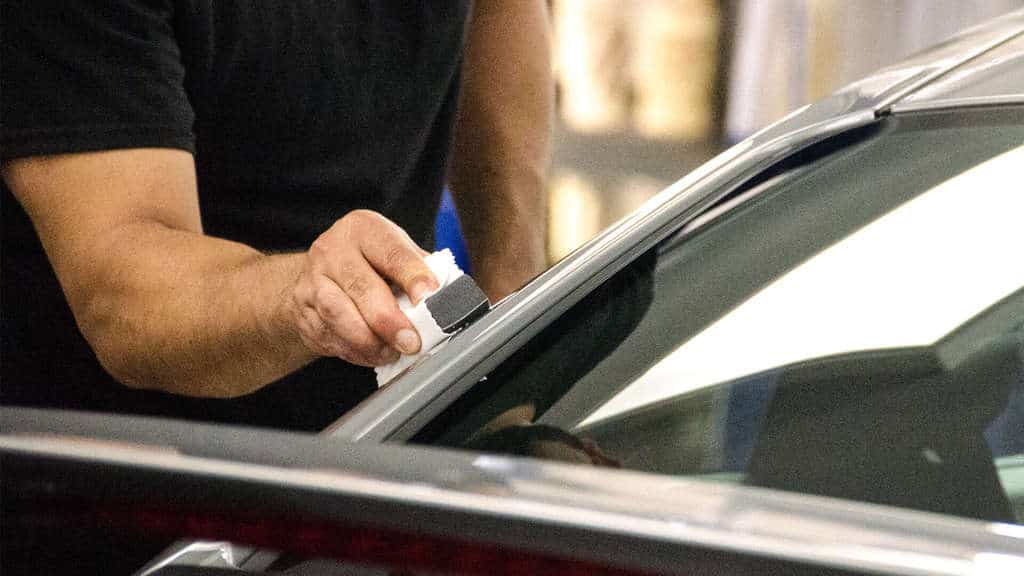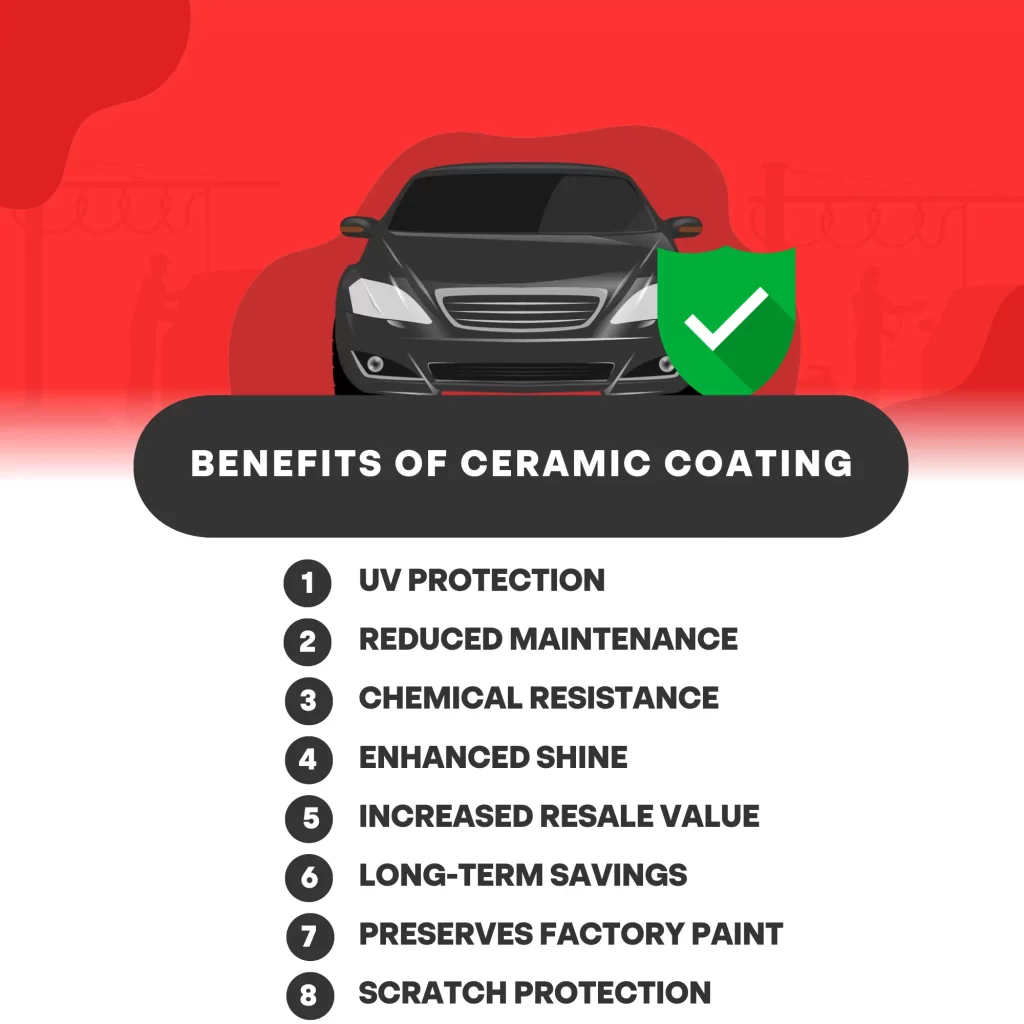Ceramic Coating: The Future of Automotive Surface Protection
Ceramic Coating: The Future of Automotive Surface Protection
Blog Article
Ceramic Covering vs. Conventional Wax: Which Gives Better Long-Term Defense?
The discussion in between ceramic coatings and typical wax for automobile security has amassed considerable focus amongst vehicle enthusiasts and specialists alike. While both offer the objective of guarding paint, their distinctions in resilience, application, and lasting maintenance expenses may affect a consumer's option. Ceramic coatings boast remarkable long life and resistance to environmental factors, yet the intricacy of their application increases concerns about access and practicality. As we check out these contrasting alternatives, it ends up being vital to consider not just the immediate benefits but likewise the implications for lorry care in time.
Introduction of Ceramic Covering
Ceramic finish has gained substantial appeal among automotive enthusiasts and detailers alike as a result of its innovative protective qualities. This ingenious modern technology is developed to produce a durable, hydrophobic shield over a lorry's paint surface, considerably boosting its resistance to ecological contaminants such as dirt, UV rays, and chemical stains. Unlike traditional wax, which offers a momentary layer of security, ceramic coverings bond at a molecular level with the paint, offering durable resilience-- frequently extending beyond two years with correct maintenance.
The application process involves precise preparation of the vehicle's surface area, including cleaning and polishing to ensure optimum attachment. As soon as applied, the covering treatments to develop a durable layer that not only includes depth and gloss to the paint yet additionally streamlines maintenance. With its hydrophobic residential or commercial properties, ceramic layer enables water and dust to glide off even more quickly, minimizing the frequency of laundries and minimizing the threat of swirl marks.
Additionally, ceramic finishings are offered in different formulations, allowing customers to choose items customized to their particular requirements and preferences. On the whole, ceramic covering represents a considerable development in paint defense innovation, delivering exceptional performance contrasted to standard options.
Summary of Typical Wax
Traditionally considered as a staple in auto care, wax offers as a preferred option for those looking for an uncomplicated approach to improve and safeguard their vehicle's paint - ceramic coating. Automotive wax commonly consists of all-natural ingredients, such as carnauba, or artificial compounds, designed to develop a protective layer on the surface of the paint. This layer not only boosts the car's gloss and radiate but likewise gives a barrier against environmental pollutants
The application of wax is usually straightforward, making it obtainable for both specialists and DIY fanatics. As soon as applied, wax needs a healing period, after which it sets to form a safety shell.
However, while wax is reliable for improving the visual charm of a car, it is essential to keep in mind that the security it uses might demand extra regular reapplication compared to different products, such as ceramic coatings. On the whole, traditional wax continues to be a popular alternative for those prioritizing convenience of use and prompt visual improvement.
Longevity and Longevity Comparison
While both ceramic finishings and traditional wax offer protective benefits for vehicle paint, their durability and longevity differ significantly. Standard wax, typically made from all-natural carnauba or artificial polymers, typically offers a protective layer that lasts about 3 to six months. This reasonably short life-span requires regular reapplication to maintain optimal protection.
On the other hand, ceramic finishes are crafted from sophisticated nanotechnology, forming a covalent bond with the paint surface area. This leads to a durable, hydrophobic layer that can sustain for two to 5 years, depending upon the item and environmental problems. The superior resilience of official statement ceramic coatings is credited to their chemical structure, which provides enhanced resistance to scratches, UV rays, and oxidation.

Defense Against Environmental Aspects
Securing a vehicle's paint from ecological variables is crucial for maintaining its look and worth in time. Autos are regularly subjected to a range of components, including UV rays, bird droppings, tree sap, acid rain, and road crud, all of which can read here compromise the stability of the paintwork.
Ceramic finishings provide a durable defense versus these environmental aggressors. Unlike traditional wax, which can degrade rapidly under UV exposure, ceramic finishings develop a sturdy, hydrophobic layer that withstands the harmful impacts of sunlight and toxic wastes. This advanced modern technology produces a chemical bond with the lorry's surface, offering superior protection that lasts for years, even in extreme conditions.
In contrast, ceramic finishings keep their protective qualities longer, dramatically reducing the danger of paint damage and making certain that the lorry maintains its aesthetic charm. As an outcome, ceramic coatings are significantly identified as the premium selection for long-lasting defense against environmental variables.
Application and Upkeep Distinctions
The methods of application and succeeding maintenance for ceramic finishes and standard wax differ considerably, influencing the general individual experience and performance of each item. Ceramic coverings require a more detailed application process, usually entailing surface preparation that includes washing, decontaminating, and brightening the car. As soon as the surface prepares, the ceramic layer is used in a controlled atmosphere, often needing expert competence to ensure proper curing and bonding to the paint.

While both items enhance car appearance, the longer-lasting security offered by ceramic finishes may justify their preliminary financial investment, in spite of the even more requiring application procedure. Alternatively, traditional wax stays a preferred selection for those looking for a less complex, albeit temporary, option.

Verdict
To conclude, ceramic layers show substantial benefits over standard wax in terms of resilience and ecological security. With a life-span extending two to 5 years and superior resistance to UV rays, dust, and chemical stains, ceramic finishings provide a much more reliable solution for long-lasting lorry upkeep. The application process may call for expert competence, the resulting cost financial savings and reduced regularity of reapplication underscore the value of ceramic coatings for those seeking optimum lorry security.
The debate in between ceramic coatings and standard wax for lorry security has actually gathered substantial focus amongst automotive lovers and professionals alike. Unlike typical wax, which why not try here provides a short-term layer of protection, ceramic finishes bond at a molecular level with the paint, supplying lasting toughness-- commonly prolonging past two years with correct maintenance.
While both ceramic coverings and conventional wax deal safety advantages for automotive paint, their longevity and long life differ significantly. For auto fanatics looking for long-lasting protection, ceramic coatings present a compelling benefit over standard wax items.
In final thought, ceramic coverings show considerable advantages over typical wax in terms of sturdiness and environmental security.
Report this page